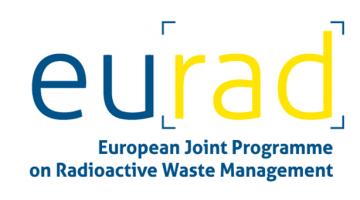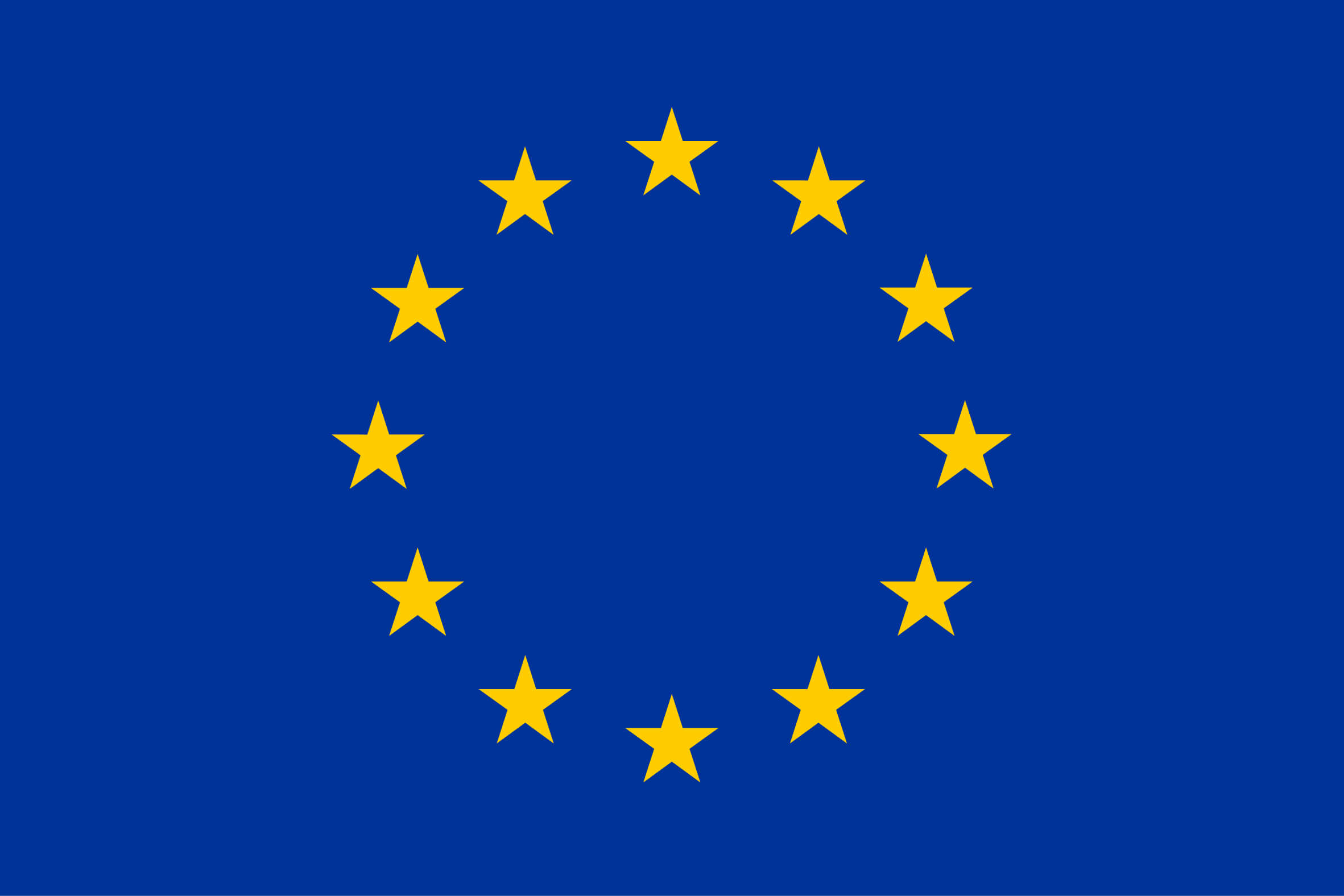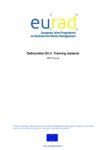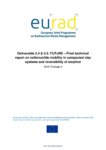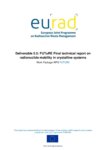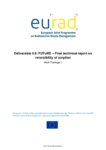FUTURE: Fundamental understanding of radionuclide retention (EURAD WP)
Project Dates: 1st June 2019 – 30 May 2024
Project Status: Finished
Project Website:
FUTURE was an RD&D Work Package (WP) within EURAD. It aimed to quantify the long-term entrapment of key radionuclides in solid phases to inform reactive transport models and the influence of redox.
Overview
“Radionuclide mobility” was identified by WMOs, TSOs and REs as Theme 4 in the EURAD Roadmap. It was a key theme in all radioactive waste management countries in Europe, a cornerstone for any proof of safety of nuclear waste disposal concepts. Hence, it was evident that this theme should also be part of the first European Joint Programme, acknowledging that there has been research on the various topics of radionuclide migration for more than 30 years, often funded by the European Commission, but also acknowledging that various key themes have not been addressed in previous European projects (e.g. FUNMIG, SKIN, RECOSY) with sufficient depth and with sufficient potential for applicability on the real repository systems in clay or crystalline rock. The results of the project reduce uncertainties and over-conservatism of current approaches and improve the scientific basis, the realism and credibility for the safety case of deep geological disposal in clay and crystalline rock.
Objective
This WP aimed to bring about a step change in quantitative mechanistic understanding of radionuclide retention in the repository barrier system – the key mission of any repository for radioactive waste. Consequently, the raison d’être of this WP concerned the identification of constraints and improving the predictability of RN migration properties in “real” clay and crystalline rocks, quantifying the influence of key parameters of the heterogeneous rock/water system such a rock structure, redox interfaces, water saturation, reversibility etc. with the goal of developing multicomponent mechanistic sorption models, fracture and/or pore scale simulations of radionuclide transport in both crystalline and clay rock considering the combined analysis of reactivity, structure, flow field, and RN mobility/retention.
Closing words from WP Leader
WP5 FUTURE has been successfully finished with all deliverable approved and accepted by EC within contractually agreed project timeframe of 52 months. Final project meeting took place at the University of Berne, on February 28-29, 2024, in Switzerland.
Key finding of the project are summarized in SOTA-II update (D5.2), a shortened version of the report was submitted to Frontiers journal for publication. All research questions formulated at the beginning of the project have been considered and addressed with elan of scientific excellence. In particular, mechanistic understanding of RN retention and transport provided a consented model-based way for derivation of parameter to be used in SA/PA in real geological environment at wide range of close to equilibrium geochemical conditions. Furthermore, the developed models are not limited to radionuclides transport but provide enhanced scientific basis for simulation of repository in situ conditions. Detailed analysis of the knowledge gaps and scientific exchange with other WPs (CORI, DONUT, ACED, GAS) inspired the development of EURAD-II projects. Important contribution to knowhow transfer is the supervision of 8 joint PhDs; 3 postdocs; several MSc projects.
The success of the project and results obtained has been strongly acknowledged by leading experts in the field. The data obtained close several knowledge gaps and pave a way for future research on repository safety. The project has been a great success thank to collaborative effort of highly experienced multinational research team with sophisticated research infrastructure!
Outcomes
Thanks to intensive collaboration between partners, major scientific advances were obtained in the frame of this project. In particular:
- Instrumental developments at CAT-ACT (KIT light source) and at the Rossendorf (BM20 at ESRF) beamlines, which enabled improved resolution for the detection and speciation of chemical elements, e.g., Np, and thus the investigation of (redox) phenomena under conditions (dilute systems) that are relevant for in situ conditions.
- Reliable protocols and synthesis methods have been developed or improved to produce or condition clays (nontronite) and iron oxides (magnetite, goethite, green rust) with controlled properties, such as the size, density of structural defects, or Fe content and Fe(II)/Fe(III) ratio. In addition, (electro)chemical protocols have been developed and applied to quantitatively monitor changes in the redox state of Fe in solids. These solid samples were subsequently characterized, and several samples were shared with the partners involved and used for further sorption experiments. In addition, samples of clay rocks were shared for characterization and use in sorption
experiments. - Sorption experiments involving redox-sensitive elements relevant for radioactive waste disposal (Se, Np, U, Tc – and Re used as analogies in some studies) and the relevant minerals described above (Fe-poor and Fe-rich clays, iron oxides, green rust) were successfully conducted. The detailed results are described in the main part of the experimental report, and only two major examples discussed in the summary. The first example is Se: when interacting with clay minerals, no Se(IV) reduction is observed, when it is contacted with a sample that does not contain redoxactive Fe(II). In the presence of redox-active Fe, Se(IV) is reduced to Se(0), with the nature of the
product (grey or red Se(0)) being kinetically controlled. The effects of chemical conditions (e.g., pH) could also be quantified. Upon contact with Fe oxides (magnetite and green rust with Cl interlayer), Se reduction to Se(0) is also observed, with pH playing an important role. The second example is Tc/Re: It was also observed that structural redox-active Fe(II) is necessary for the reduction and that the adsorption of Fe(II) on clay minerals further enhances the reduction. The effects of chemical conditions (pH, oxic or anoxic, presence of reducing agents) on sorption and reaction kinetics could also be quantified. Theoretical quantum mechanical calculations were used to investigate and determine the nature of the reaction product. - The interaction of redox-sensitive elements with mineralogical assemblages (dispersed or compacted) and with compacted clay rock was investigated. Thus, it was possible, for example, to analyse the diffusion of U(VI) in an intact, compacted, Callovian-Oxfordian sample for ~600 d and to both determine a retention coefficient and investigate redox disequilibria due to U complexation with carbonates.
- Results obtained in the project provide convincing arguments that bottom-up schemes are applicable for
the description of sorption processes albeit not always straightforward, as relevant underlying mechanisms and sorption competition aspects must be taken into account rigorously. The transferability of data and models has been established from dispersed to compacted systems and from single mineral to complex mineral assembly. New/missing data became available and have been successfully fed into sorption models.

